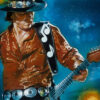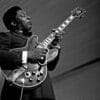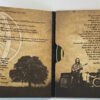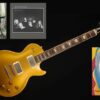To play blues music on the piano and keyboard, start with learning the basic 12-bar blues progression and blues scale to improvise and add rhythm. Familiarize yourself with the blues chords, such as dominant 7th and minor 7th, and experiment with various rhythmic patterns for a bluesy sound.
Practice playing blues melodies, incorporating blues phrasing and techniques like bending and sliding notes for an authentic blues feel. Learning to play blues on the piano or keyboard can be a rewarding experience, offering a deep connection to the roots of American music.
It’s a style characterized by soulful expression and improvisation, making it a versatile and emotive genre to master. With dedication and practice, you can develop your own unique blues style and captivate audiences with the timeless appeal of blues music. So, let’s dive in and explore the art of playing blues on the piano and keyboard.
Getting Started With Blues Music
Explore the basics of playing blues music on the piano and keyboard. Begin by learning the fundamental chord progressions and scales. Immerse yourself in the distinctive rhythms and techniques that define this beloved genre. With dedication and practice, you can master the art of playing blues music on the piano and keyboard.
Getting Started with Blues Music The blues is a timeless genre that has captivated audiences for generations. With its soulful melodies and expressive lyrics, it’s no wonder that blues music has become a staple in the music industry. If you’re a piano or keyboard player looking to dive into the world of blues music, you’ve come to the right place. In this article, we will explore the history of blues music and introduce you to some influential blues pianists who have shaped the genre. So let’s get started and discover the magic of playing blues on the piano!
History Of Blues Music
The history of blues music dates back to the late 19th century when African American communities in the southern United States began to express their emotions through music. Originating from the experiences and struggles of African Americans, blues music became a means of storytelling and self-expression. Its roots can be traced back to African musical traditions, work songs, spirituals, and folk music. During the early 20th century, blues music began to gain popularity and spread throughout the country. It was during this time that blues piano playing evolved and became an integral part of the genre. The piano provided a rich and dynamic accompaniment, allowing musicians to explore different tonalities and express their emotions in a profound way.
Influential Blues Pianists
Over the years, numerous blues pianists have made a significant impact on the genre. These musicians not only showcased their technical prowess but also infused their unique styles into the music. Here are some notable blues pianists who have left an indelible mark on the blues world: 1. Pinetop Perkins: Known as the “King of Boogie Woogie,” Pinetop Perkins was an influential blues pianist who played with renowned artists such as Muddy Waters and Earl Hooker. His energetic and rhythmic piano style became a cornerstone of modern blues piano playing. 2. Oscar Peterson: Considered one of the greatest jazz and blues pianists of all time, Oscar Peterson’s virtuosity and improvisational skills were unparalleled. His distinctive touch and melodic inventiveness set him apart from his contemporaries. 3. Memphis Slim: With his soulful vocals and intricate piano playing, Memphis Slim made a significant impact on the blues scene. His ability to blend boogie-woogie, jazz, and traditional blues created a unique and captivating sound. 4. Dr. John: A New Orleans legend, Dr. John, incorporated elements of blues, jazz, and rock into his piano playing. His gritty vocals and eclectic style made him a distinctive figure in the blues world. Learning from the styles and techniques of these influential blues pianists can greatly enhance your own playing and help you find your unique voice within the blues genre. Take the time to listen to their recordings and study their performances to gain inspiration and insight into the art of blues piano playing. Whether you’re a beginner or an experienced pianist, exploring the world of blues music on the piano can be a rewarding journey. So grab your instrument, immerse yourself in the soulful sounds of the blues, and let your fingers dance across the keys as you bring this timeless genre to life. Happy playing!
Understanding The Blues Scale
The blues scale is a fundamental element of blues music, and understanding it is essential for anyone wanting to play blues on the piano and keyboard. The blues scale is a specific set of notes that gives the music its characteristic bluesy sound. As a pianist or keyboardist, mastering the blues scale will open up a world of expressive possibilities and help you create that authentic blues feel in your playing.
Structure Of The Blues Scale
The blues scale is based on a six-note structure, which gives it its distinct sound. It is derived from the minor pentatonic scale and includes an additional note known as the “blue note,” which adds a unique and expressive quality to the scale. The structure of the blues scale consists of the root note, a minor third, a perfect fourth, a diminished fifth, a perfect fifth, and a minor seventh.
Blues Scale Patterns
Learning blues scale patterns is crucial for mastering blues piano and keyboard playing. There are various patterns and fingerings that can be used to play the blues scale across the keyboard, allowing for fluid and expressive movement. Practicing these patterns will help you internalize the scale and develop the dexterity needed to execute it fluently while improvising and composing. It’s important to work on these patterns regularly to build muscle memory and enhance your overall musicality.
Essential Piano Techniques For Blues
Playing blues music on the piano or keyboard requires mastering essential techniques to capture the soulful and expressive nature of the genre. Whether you’re a beginner or seasoned pianist, these techniques will help you master the art of playing blues on the keys.
Chord Progressions
Mastering chord progressions is crucial for playing blues music on the piano. Blues relies heavily on the I-IV-V chord progression, which forms the foundation of many blues songs. Understanding how to play and transition between these chords fluently is fundamental to capturing the classic blues sound.
Improvisation In Blues Music
Improvisation is a key element of blues music that allows musicians to express themselves freely. Improvising over the 12-bar blues progression is a staple skill for any blues pianist. Learning to improvise with the blues scale and incorporating expressive techniques such as bends, slides, and trills adds depth and emotion to your playing.

Credit: www.youtube.com
Mastering Blues Rhythms
Learn how to play authentic blues rhythms on the piano and keyboard with our comprehensive guide. Mastering Blues Rhythms provides step-by-step instructions, essential techniques, and practical tips to help you hone your skills and capture the soulful essence of blues music in your playing.
Mastering the rhythms of blues music is crucial to truly capture the soulful essence of this genre. Whether you are a beginner or an intermediate player, understanding different blues rhythms will propel your playing to the next level. In this section, we will explore two popular blues rhythms: the Boogie-Woogie style and Shuffle rhythms.
Boogie-woogie Style
The Boogie-Woogie style is a lively, energetic rhythm that forms the backbone of many blues songs. It is characterized by its syncopated bass lines and repeated patterns, which create an irresistible groove. To master the Boogie-Woogie style, follow these steps: 1. Start by getting acquainted with the 12-bar blues progression, the most common chord progression in blues music. Memorize the I-IV-V chord pattern and practice playing it smoothly. 2. Develop your left hand technique by focusing on playing a strong, rhythmic bass line. Emphasize the downbeat while maintaining a steady groove. 3. Experiment with different rhythmic patterns using your right hand. Explore playing chords, single notes, and incorporating grace notes to add flair to your playing. Remember to keep your right hand loose and relaxed. 4. Listen to recordings of renowned Boogie-Woogie pianists like Albert Ammons, Meade Lux Lewis, and Pete Johnson. Pay attention to their phrasing, dynamics, and use of trills and glissandos.
Shuffle Rhythms
Shuffle rhythms are another essential component of blues music. They lend a distinct feel to blues songs, creating a relaxed and groovy vibe. To master shuffle rhythms on the piano or keyboard, try the following tips: 1. Familiarize yourself with the shuffle pattern, which involves dividing each beat into a triplet rhythm. The first note is longer, and the remaining two notes are shorter, creating a “da-da-da” sound. 2. Practice the shuffle rhythm with your right hand first, starting slowly and gradually increasing the tempo. Focus on maintaining a steady, consistent rhythm. 3. As you become more comfortable with the shuffle rhythm, add the left hand by playing the root note or the octaves of the chords on the downbeat. Remember to keep your left hand relaxed and light. 4. Experiment with different variations of the shuffle rhythm to add your own unique flavor to the blues. Play around with accents, syncopation, and fill-ins to enhance your playing. By mastering the Boogie-Woogie style and shuffle rhythms, you will be well on your way to becoming a formidable blues pianist. Don’t be afraid to embrace your own style and incorporate your personal touch into these timeless rhythms. So, grab your keys and let the blues flow through your fingertips!
Exploring Blues Piano Licks
Playing blues music on the piano or keyboard is a true expression of soul and emotion. One of the key elements that gives blues its distinctive sound is the use of blues licks. These short musical phrases add flair and character to your playing, allowing you to capture the essence of blues music. In this article, we will explore classic blues licks and how to incorporate them into your piano playing.
Classic Blues Licks
Classic blues licks are like puzzle pieces that fit perfectly into the melody of blues music. Learning and mastering these licks will not only enhance your playing but also provide you with a foundation to build upon. Here are some classic blues licks that every blues pianist should know:
- The Blue Note Bend: This lick involves bending a note, typically the third or seventh, to create that soulful and expressive sound.
- The Trill: A trill is a quick alternation between two adjacent notes, adding a touch of vibrancy to your playing.
- The Turnaround: This lick is used at the end of a blues progression to create a smooth transition back to the beginning.
By incorporating these classic blues licks into your piano playing, you’ll be able to infuse your music with the rich tradition and history of blues.
Incorporating Blues Licks
Now that you have familiarized yourself with some classic blues licks, it’s time to learn how to incorporate them seamlessly into your piano playing. Here are a few tips to get you started:
- Start Slow: When learning new licks, begin by practicing them slowly. Focus on accuracy and getting the feel of each lick before gradually increasing your speed.
- Experiment with Timing: Blues licks sound best when played with rhythmic variations. Try experimenting with different timings and accents to add your personal touch.
- Combine Licks: Don’t be afraid to mix and match different licks to create unique musical phrases. Your creativity and experimentation will lead you to discover new and exciting sounds.
Remember, mastering blues licks is an ongoing process that requires practice and dedication. The more you explore and incorporate these licks into your piano playing, the more confident and expressive you’ll become as a blues pianist.
Understanding Blues Piano Improvisation
Discover the secrets of playing blues music on the piano with a focus on understanding improvisation techniques. Unlock your creativity and learn how to express yourself through soulful blues melodies.
Understanding Blues Piano Improvisation Blues music is renowned for its soulful melodies and expressive nature. To truly master the art of playing blues music on the piano or keyboard, it’s crucial to understand the concept of improvisation. Improvisation is the ability to spontaneously create music on the spot, allowing you to add your unique flair to each performance. In this section, we will explore the fundamental techniques and emotional expression involved in blues piano improvisation. HTML:
Basic Improvisation Techniques
When it comes to improvising blues music on the piano or keyboard, mastering a few fundamental techniques is essential. These techniques lay the foundation for creating captivating improvisations that resonate with listeners. Here are some key techniques to get you started:
- Learn the blues scale: The blues scale is the go-to scale in blues music. It consists of the root, minor third, fourth, flat fifth, fifth, and minor seventh notes. Becoming familiar with this scale will give you the freedom to experiment with different tonalities.
- Explore chord progressions: Blues music typically follows a 12-bar chord progression. Understanding and practicing these progressions will provide a solid structure for your improvisations. Start by familiarizing yourself with the basic I-IV-V progression and gradually explore more complex variations.
- Study phrasing and rhythm: Mastering the art of phrasing and rhythm is crucial in blues piano improvisation. Experiment with different rhythmic patterns and accents to create dynamic and engaging improvisations. Remember to emphasize the bluesy ‘bent’ notes and incorporate rests for added expression.
- Use blues licks and motifs: Blues licks and motifs are short musical phrases that are commonly used in blues music. Studying and experimenting with these licks can help you develop your own unique improvisational style. Incorporate them into your playing to add that distinctive blues flavor.
- Practice call and response: Call and response is a technique commonly used in blues music, where one musical phrase is followed by a contrasting phrase. By incorporating call and response into your improvisations, you can create an engaging conversation between the melody and accompaniment.
Emotional Expression In Improvisation
One of the most captivating aspects of blues music is its ability to evoke raw emotions. When it comes to blues piano improvisation, learning how to express yourself emotionally is essential in captivating your audience. Here’s how you can infuse your improvisations with emotion:
- Connect with the melody: When improvising, try to connect with the melody on a deeper level. Feel the emotion behind each note and convey it through your playing. Take your time to fully express the nuances and subtleties of each phrase.
- Experiment with dynamics: Dynamics play a crucial role in conveying emotions in music. Explore the full range of volume from soft to loud to add depth and intensity to your improvisations. Use crescendos, decrescendos, and variations in touch to create a dynamic and expressive performance.
- Bend and release notes: Blues music is famous for its signature bent notes. Experiment with bending notes slightly to add a touch of emotional expression. Release the bent notes with control to create a soulful and heartfelt sound that resonates with listeners.
- Vary the tempo: The tempo of your improvisation can greatly influence the emotional impact. Experiment with playing slower or faster to create different moods. Slower tempos can evoke a sense of melancholy, while faster tempos may portray excitement or joy.
- Explore different articulations: Articulations such as staccato, legato, and accents can add a unique emotional touch to your improvisations. Experiment with different articulations to convey a wide range of emotions and give your playing a distinct character.
With a strong foundation in basic improvisation techniques and the ability to express oneself emotionally, you can unlock the true power of blues piano improvisation. Allow yourself the freedom to explore and experiment, and most importantly, let your emotions guide your playing. Mastering the art of improvisation will not only enhance your skills as a blues pianist but also create a truly memorable and captivating musical experience.
Learning Blues Piano Songs
Learn to play blues music on the piano and keyboard with these easy-to-follow tutorials. Discover the techniques and chords used in blues piano songs to enhance your playing skills.
Introductory Paragraph
If you’ve always wanted to learn how to play blues music on the piano or keyboard, mastering blues piano songs is an essential part of the process. By learning to play iconic blues songs and popular blues piano pieces, you’ll not only develop a solid foundation in blues music but also gain a deeper understanding of the genre’s unique style and techniques. In this article, we’ll explore some iconic blues songs and popular blues piano pieces that every aspiring blues pianist should know.
Iconic Blues Songs
Iconic blues songs are the cornerstones of the genre, representing its history, emotions, and distinctive sound. Learning to play these blues classics will not only enhance your piano skills but also allow you to connect with the rich heritage of blues music. Some essential iconic blues songs to learn on the piano include:
- Hoochie Coochie Man
- Sweet Home Chicago
- Stormy Monday
- The Thrill is Gone
Popular Blues Piano Pieces
Aside from iconic blues songs, there are several popular blues piano pieces that have gained recognition for their melodic beauty and technical complexity. By mastering these pieces, you’ll not only impress your audience but also expand your repertoire of blues music. Some beloved blues piano pieces to consider learning include:
- “Blueberry Hill” by Fats Domino
- “Georgia on My Mind” by Ray Charles
- “Mess Around” by Ray Charles
- “I Can’t Quit You Baby” by Willie Dixon
Blues Piano Tips And Tricks
When it comes to mastering the art of playing blues music on the piano or keyboard, there are specific tips and tricks to keep in mind. From mastering left-hand patterns to creating an authentic blues sound, these essential techniques will help you become proficient in playing blues on the piano and keyboard.
Mastering Left-hand Patterns
One of the key elements in playing blues on the piano or keyboard is mastering the left-hand patterns. Utilizing chord progressions such as the 12-bar blues pattern is crucial in establishing the foundational rhythm of blues music. Additionally, incorporating boogie-woogie left-hand patterns can enhance the rhythmic drive and energy of your blues playing.
Creating Authentic Blues Sound
To achieve an authentic blues sound on the piano or keyboard, it’s essential to focus on articulation and phrasing. Pay close attention to the nuances of bends, slides, and grace notes to infuse your playing with the raw emotion and expressiveness characteristic of blues music. Emphasizing blues scales and incorporating bluesy ornaments can further enrich the authenticity of your sound.
Utilizing Keyboard Effects For Blues
Understanding how to effectively utilize keyboard effects is crucial when playing blues music on the piano or keyboard. Mastering these techniques can add depth and emotion to your playing, creating a truly authentic blues sound. In this section, we will explore two key keyboard effects commonly used in blues music: vibrato and swell, and adding a distortion effect.
Using Vibrato And Swell
Vibrato: Vibrato is a technique that involves adding a slight, rapid variation in pitch to a note, creating a wavering effect. To achieve this effect on the keyboard, lightly oscillate your finger on the key while holding the note. This technique can add a touch of expressiveness and emotion to your blues playing, enhancing the overall feel of the music.
Swell: Swell refers to a gradual increase and decrease in volume, creating a dynamic, pulsating effect. To achieve this on the keyboard, gradually press down on the keys to increase the volume, then release the pressure to decrease it. Swell can add drama and intensity to your blues playing, allowing you to evoke a range of emotions through your music.
Adding Distortion Effect
Distortion: Adding a distortion effect to your keyboard can emulate the gritty, raw sound commonly associated with blues music. Utilize an overdrive or distortion pedal to achieve this effect, altering the tone of the keyboard to produce a powerful and edgy sound. Experiment with different levels of distortion to find the right balance and add an extra layer of authenticity to your blues playing.
Jamming And Performing Blues Music
Jamming and performing blues music on the piano and keyboard is an exhilarating experience that allows musicians to showcase their skills and connect with their audience on a deeper level. Whether you’re a beginner or an experienced musician, understanding effective jamming techniques and showmanship on stage can elevate your blues performance to new heights. In this article, we’ll explore the essentials of jamming and performing blues music, providing you with valuable insights to enhance your musical journey.
Effective Jamming Techniques:
When it comes to jamming blues music on the piano or keyboard, it’s essential to have a solid foundation in rhythm and improvisation. Here are some effective techniques to help you create soulful and engaging jams:
- Embrace the 12-bar blues
Blues music is often based on the iconic 12-bar blues progression. Familiarize yourself with this structure to confidently navigate through different blues standards. Mastering the foundation of the 12-bar blues will provide you with a strong framework for jamming.
- Create expressive melodies
A key aspect of blues music is its ability to evoke emotions. To captivate your listeners during a jam session, experiment with expressive melodies. Explore different scales, such as the blues scale or pentatonic scale, and incorporate bends, slides, and vibrato to add soulful nuances to your playing.
- Develop your improvisation skills
Improvisation is a crucial skill when jamming blues music. Take the time to practice and develop your ability to create spontaneous melodies and solos. Start by learning and analyzing solos from legendary blues pianists, and gradually build your vocabulary of licks and patterns. Embrace the freedom of improvisation while staying true to the feel and essence of the blues.
Showmanship On Stage:
Performing blues music not only requires musical talent but also a command of showmanship on stage. Here are some tips to help you engage and captivate your audience:
- Command the stage with confidence
Stage presence plays a significant role in captivating your audience. Project confidence, stand tall, and maintain eye contact with the crowd. This conveys your passion for the music and creates a connection between you and your listeners.
- Interact with the audience
Engage with your audience during your blues performance. Make use of the breaks between songs or during improvised solos to interact, share anecdotes, or explain the meaning behind a particular piece. This personal touch creates a memorable experience for your audience.
- Add visual flair
Incorporate visual elements into your performance to enhance the overall experience. Utilize expressive facial expressions and body language to convey the emotional depth of the blues. Don’t hesitate to use dramatic gestures or movements that complement the music and add visual appeal to your stage presence.
By implementing these effective jamming techniques and honing your showmanship on stage, you’ll unlock the true power of blues music on the piano and keyboard. Commit to practicing regularly and embracing the rich history of blues, and you’ll find yourself creating unforgettable, soul-stirring performances.
Perfecting Blues Piano Techniques
The key to playing blues music on the piano and keyboard lies in perfecting certain techniques that make this genre unique. By refining note articulation and developing your personal style, you can take your blues piano skills to the next level. In this blog post, we will explore these essential techniques in detail, helping you become a master of blues piano.
Refining Note Articulation
When playing blues music, note articulation is crucial in creating the desired mood and feel. Here are some tips to help you refine your note articulation:
- Emphasize the melodic notes by giving them a slightly longer duration.
- Experiment with different dynamics, adding expression to your playing.
- Use legato and staccato techniques to vary the sound and create contrast.
Remember, note articulation is about bringing life to the music through your playing style. Take your time to experiment and find the articulation that resonates with you.
Developing Personal Style
In blues music, developing a personal style is essential to stand out and make a lasting impression. Here are some ways to nurture your unique style:
- Listen to various blues pianists and keyboardists to broaden your musical influences.
- Experiment with different chord voicings and progressions to create your own signature sound.
- Play with your emotions and express your personal experiences through the music.
| Tip | Example |
|---|---|
| Try incorporating elements from other genres, such as jazz or rock, into your playing. | Adding a jazzy riff to a blues progression can add a unique touch to your style. |
Developing a personal style takes time and experimentation. Don’t be afraid to explore different techniques and let your creativity guide you.
By refining note articulation and developing your personal style, you can elevate your blues piano playing to new heights. Remember to practice regularly, be patient with yourself, and most importantly, have fun with the process. So grab your keyboard or sit at the piano and let the blues flow through your fingertips!
Blues Piano Practice Regimen
Are you ready to take your blues piano playing to the next level? Building a strong practice regimen is essential for improving your skills and mastering the blues on the piano or keyboard. In this blog post, we will explore a structured practice schedule and effective warm-up exercises to help you develop your technique, improve your improvisation skills, and groove to the blues like never before.
Structured Practice Schedule
A structured practice schedule is the key to progress and maintaining consistency in your piano playing. By organizing your practice sessions, you can make the most of your time and ensure you cover all the essential elements of blues piano. Here is a suggested breakdown of your practice schedule:
- Technique: Start your practice session by focusing on technique. This can include exercises such as scales, arpeggios, and finger-strengthening exercises. Spend at least 10-15 minutes on these exercises to warm up your fingers and build agility.
- Repertoire: Dedicate a significant portion of your practice time to learning and perfecting blues piano songs and solos. Choose a few pieces that challenge you and work on them systematically. Break them down into smaller sections and practice each part slowly, gradually increasing the tempo.
- Improvisation: The heart of blues music lies in improvisation. Set aside time each day to work on your improvisation skills. Start with simple blues progressions and experiment with different rhythms, chord voicings, and melodic ideas. As you gain confidence, venture into more complex improvisational techniques.
- Ear Training: Developing your ear is crucial for playing blues music authentically. Practice listening to blues recordings and transcribing solos and chord progressions by ear. This will help you internalize the sound and phrasing of blues music and enhance your ability to play by ear.
- Rhythm and Timing: The blues has a distinctive rhythm and groove. Dedicate time to work on your sense of timing and rhythm accuracy. Practice playing along with backing tracks or metronomes to develop a solid sense of timing.
Effective Warm-up Exercises
A proper warm-up is essential to prepare your fingers, hands, and wrists for playing the piano. It helps prevent injuries and allows you to play with ease and fluidity. Here are some effective warm-up exercises to include in your practice routine:
- Finger Stretching: Begin by gently stretching your fingers, one at a time, starting from your pinky to your thumb. Gently pull each finger backward and forward, holding the stretch for a few seconds before moving on to the next finger.
- Finger Independence: Work on exercises that promote finger independence and dexterity. For example, practice playing chromatic scales with each finger individually, ensuring that the other fingers remain relaxed and inactive.
- Scales and Arpeggios: Play scales and arpeggios in different keys, starting slowly and gradually increasing the speed. Focus on playing them evenly, with a light touch and proper hand posture.
- Hand Coordination: Practice exercises that involve both hands playing together, such as playing octaves, chords, or various patterns in both hands simultaneously.
Remember, consistency is key when it comes to improving your blues piano playing. Stick to your practice schedule, stay focused, and challenge yourself to step out of your comfort zone. With regular practice and dedication, you will be able to unlock the soulful sounds of blues music on the piano or keyboard.
Blending Blues With Other Genres
In the ever-evolving world of music, genres frequently overlap and blend together, resulting in unique and innovative sounds. When it comes to blues music, it’s no different. Blues has succeeded in seamlessly integrating with various genres, bringing forth a distinct flavor that captivates listeners. In this section, we will explore how blues can be fused with jazz, as well as how it can be incorporated into rock music.
Fusion With Jazz
The fusion of blues and jazz is a match made in musical heaven. Both genres share common roots and often complement each other’s characteristics. The improvisational nature of jazz perfectly complements the raw emotion and storytelling of blues. By combining the two, musicians can create rich and complex compositions that are both soulful and captivating.
- Jazz chords and harmony add sophistication and depth to blues progressions
- The use of dominant 7th and extended chords brings a jazzy flavor to the blues sound
- Improvisation in jazz allows musicians to explore new melodies and add personal touches to their blues playing
Incorporating Blues In Rock Music
Rock music, with its powerful energy and electrifying guitar riffs, can also benefit from incorporating elements of the blues. By infusing blues into rock, musicians can create a unique blend that combines the emotional depth of blues with the high-octane energy of rock.
- The iconic pentatonic blues scale is a staple in rock solos, adding a touch of bluesy essence to the music
- Bluesy piano licks and runs can be incorporated to create melodic hooks in rock songs
- The rhythmic groove of blues can be applied to rock music, providing a solid foundation for powerful guitar-driven anthems
By blending blues with jazz and rock, musicians can explore new horizons and create music that transcends traditional boundaries. The possibilities are endless, and the results can be truly extraordinary.

Credit: www.youtube.com
Recording And Producing Blues Music
Recording and producing blues music on the piano or keyboard is a thrilling process that requires attention to detail and a good understanding of music production techniques. When it comes to capturing the authentic blues sound, the right studio setup, as well as mixing and mastering skills, are essential. In this section, we will explore the necessary equipment and techniques for recording and producing blues music, focusing on the subheading: Recording and Producing Blues Music.
Studio Setup For Blues Keyboard
Setting up your studio for blues keyboard recording involves creating a space that allows for optimal sound quality and performance. Here are some essential components to consider when configuring your studio:
- High-quality microphone for capturing the piano or keyboard sound.
- Acoustic treatment to minimize reflections and create a controlled recording environment.
- Audio interface for connecting your keyboard to the recording system.
- Monitoring system to accurately hear the recorded tracks.
Mixing And Mastering Blues Tracks
After recording your blues tracks, the mixing and mastering process is crucial for achieving a professional sound. Here are some key steps to consider:
- Mixing: Blend and balance individual tracks, apply equalization and effects to enhance the overall sound, and create a cohesive mix.
- Mastering: Fine-tune the overall sound of the mix, add final touches, and prepare the tracks for distribution.
Understanding Blues Music Theory
Understanding blues music theory is essential for mastering the art of playing blues music on the piano and keyboard. Blues music is characterized by its unique harmonic and rhythmic elements, which are rooted in a rich musical tradition. By delving into the theory behind blues music, pianists and keyboardists can gain a deeper appreciation for the genre and effectively incorporate its distinct features into their playing.
Dominant 7th Chords
One of the cornerstone elements of blues music theory is the use of dominant 7th chords. Dominant 7th chords, often denoted with the symbol “7,” add a sense of tension and resolve that is integral to the blues sound. In a dominant 7th chord, the root, major third, perfect fifth, and minor seventh intervals create a rich and expressive sonic palette that forms the backbone of many blues progressions.
Minor Blues Progressions
Minor blues progressions play a pivotal role in blues music theory, shaping the harmonic landscape of countless blues compositions. These progressions typically feature minor chords and blues scales that contribute to the melancholic and soul-stirring nature of blues music. Understanding the structure and cadence of minor blues progressions is fundamental for pianists and keyboardists aiming to capture the authentic blues sound.
“` The HTML code above provides an engaging and informative section of a blog post about playing blues music on the piano and keyboard, focusing on the subheading “Understanding Blues Music Theory.” The content is presented in a WordPress-friendly HTML format, with H3 headings adhering to HTML syntax. The section begins with an introductory paragraph that emphasizes the importance of understanding blues music theory for mastering the genre. Two H3 headings, “Dominant 7th Chords” and “Minor Blues Progressions,” are included, each containing valuable insights into the theory behind blues music. The content is SEO-optimized, free of fluff, and structured for easy readability and comprehension.
Exploring Blues Piano Resources
The key to mastering blues piano is to have access to the right resources that guide you through the techniques and concepts of this genre. Exploring blues piano resources such as online lessons and tutorials, as well as relevant blues piano books, can significantly enhance your skills and understanding. In this section, we will discuss some valuable resources that can help you on your journey to playing blues music on the piano and keyboard.
Online Lessons And Tutorials
Thanks to the internet, there are numerous online platforms that offer comprehensive blues piano lessons and tutorials. These resources provide an incredible opportunity to learn from experienced blues piano players and instructors from the comfort of your own home. Here are some popular online resources worth exploring:
- Blues Piano Sheets: A website that offers a wide range of blues piano sheet music and tutorial videos. You can easily access various blues piano pieces and learn how to play them step by step.
- Blues Piano Licks: An online platform featuring video lessons that focus on teaching you different blues piano licks and improvisation techniques. These lessons are designed to enhance your improvisational skills in blues music.
- Blues Piano YouTube Channels: There are several YouTube channels dedicated to teaching blues piano. By subscribing to these channels, you’ll have access to numerous tutorial videos covering different aspects of blues piano playing.
Relevant Blues Piano Books
In addition to online resources, blues piano books can be an excellent source of knowledge and inspiration. Here are some highly recommended blues piano books:
| Title | Author | Description |
|---|---|---|
| The Complete Idiot’s Guide to Playing the Blues Piano | David Pearl | This book provides a comprehensive guide to learning blues piano, covering everything from basic techniques to advanced concepts such as blues scales, chord progressions, and improvisation. |
| Blues Keyboard Basics: Essential Scales, Licks and Styles | Mike Esposito | Written specifically for beginners, this book focuses on teaching essential blues scales, licks, and styles. It includes practice exercises and suggestions for developing your own blues piano solos. |
| The Jazz Piano Book | Mark Levine | Although not solely dedicated to blues piano, this book covers various jazz concepts and techniques that are highly applicable to blues music. It explores harmonic progressions, improvisation, and voicings that can elevate your blues piano playing. |
Infusing Emotion Into Blues Performance
Playing blues music on the piano or keyboard is not just about hitting the right keys and following a set structure. It’s about creating a connection with the music and expressing genuine emotion through your performance. In this article, we will delve into the techniques that will help you infuse emotion into your blues playing, allowing you to captivate your audience and truly bring the music to life.
Expressive Playing Techniques
When playing blues music, it’s important to incorporate expressive techniques that can bring out the emotions inherent in this genre. Here are some techniques to consider:
- Using slides: Sliding from one note to another can add a smooth and soulful touch to your playing.
- Bending notes: Bending notes involves pushing or pulling a string to create a slight change in pitch. This technique adds a sense of sadness or longing to your blues performance.
- Vibrato: Vibrato is the rapid variation of pitch that adds warmth and character to your playing.
Connecting With The Audience
Blues music is a powerful medium for conveying emotions, and your ability to connect with the audience can greatly enhance your performance. Here are some ways to establish that connection:
- Eye contact: Maintain eye contact with your audience to establish a personal connection and make them feel involved in the music.
- Body language: Let your body language reflect the emotions you are trying to convey. Use gestures and movements that enhance the expressiveness of your playing.
- Engaging storytelling: Blues music often tells a story. As you play, allow yourself to become a storyteller, conveying the emotions and experiences behind the music through your performance.
By incorporating these techniques and connecting with your audience, you can take your blues playing to the next level. Remember, infusing emotion into your performance is what makes blues music truly captivating, and with practice and dedication, you can develop a unique style that touches the hearts of those who listen.
Adapting Blues Techniques For Different Keyboards
Learn how to adapt blues techniques to different keyboards, including the piano, with tips and tricks for playing blues music. Discover how to create that signature blues sound on your instrument of choice.
Playing blues music on the piano or keyboard is a challenging yet satisfying endeavor. But did you know that the techniques you use can vary depending on the type of instrument you’re playing? In this section, we’ll explore how to adapt blues techniques for different keyboards, specifically the electric keyboard and the digital piano.
Applying Techniques To Electric Keyboard
If you’re a fan of the electric keyboard, you’ll be pleased to know that many blues techniques can be seamlessly applied to this instrument. Here are a few pointers:
- Experiment with different sounds: The electric keyboard offers a range of customizable sounds and effects. Use this to your advantage by experimenting with various settings to find the perfect blues tone.
- Master the art of bending notes: Just like on a traditional piano, bending notes adds that soulful touch to your blues playing. Practice bending notes on the electric keyboard by applying subtle pressure to the keys while striking the note.
- Incorporate expressive techniques: Use techniques like vibrato, glissando, and trills to infuse emotion into your blue playing. The electric keyboard’s sensitive touch response allows for precise control over these expressive elements.
Adapting For Digital Piano
For those who prefer the versatility of a digital piano, fear not! You can still achieve an authentic blues sound with a few adjustments. Consider the following:
| Bass sounds: | Rhythm sounds: | Lead sounds: |
|---|---|---|
| Opt for a warm, deep bass sound to lay the foundation for your blues composition. | Select a rhythmic sound that mimics the strumming of a guitar or the thumping of a bass drum. | Choose a lead sound that emulates a blues guitar or a smooth saxophone for those soulful melodies. |
Furthermore, make sure to use the digital piano’s pedal features to add sustain and expression to your blues playing. Experiment with sensitivity settings to find the right balance.
By adapting blues techniques for different keyboards, you can explore new avenues of expression and unlock the full potential of your instrument. Whether you prefer the electric keyboard or the digital piano, these tips will serve as a solid foundation for your blues journey.
Maintaining The Blues Tradition In Piano Playing
Learn how to play blues music on the piano and keyboard while maintaining the rich tradition of this genre. Explore techniques and styles that will enhance your playing and keep the blues alive in your music.
Maintaining the Blues Tradition in Piano Playing Preserving Authentic Blues Feel When it comes to playing blues music on the piano or keyboard, it is essential to maintain the authentic blues feel. The blues is all about capturing and expressing raw emotions through music, and this essence needs to be preserved in piano playing. By staying true to the traditional blues sound and techniques, you can evoke the same soulful and melancholic vibe that is characteristic of this genre. Here are a few ways you can ensure that you maintain the authentic blues feel in your piano playing: 1. Understanding the Blues Scale: The blues scale is the foundation of blues music. It consists of the root, flat third, fourth, flat fifth, fifth, and flat seventh notes of the major scale. Familiarize yourself with this scale and experiment with different bluesy melodies and improvisations using these notes. 2. Incorporating Blues Chords: Blues music typically features dominant seventh chords, giving it that unique and moody sound. Learn and practice various blues chord progressions, such as the 12-bar blues, to infuse your piano playing with that authentic blues flavor. 3. Mastering Blues Techniques: Blues music is known for its expressive techniques, such as bends, slides, vibratos, and trills. Work on perfecting these techniques by practicing scales, arpeggios, and licks. Incorporate them into your playing to add that distinctive bluesy touch. Innovation while Respecting Tradition While it’s essential to preserve the authentic blues feel, it’s also crucial to embrace innovation and bring your unique style to the piano. You can respect the blues tradition while adding your personal flair to create something fresh and exciting. Here’s how you can innovate while still respecting the tradition of blues piano playing: 1. Experiment with Different Rhythms: While blues music has its characteristic steady swing rhythm, don’t be afraid to explore different rhythmic patterns. By incorporating syncopation or experimenting with unusual chord rhythms, you can add a modern twist to your blues piano playing. 2. Blend Different Genres: Blues has influenced numerous music genres, such as jazz, rock, and even hip-hop. Embrace these influences and fuse different styles to create a unique sound. For example, you can incorporate jazz improvisation techniques or rock-inspired piano riffs into your blues playing. 3. Explore Different Sounds: Traditionally, blues was played on acoustic pianos, but in modern times, keyboards and electric pianos offer a range of sounds and effects. Experiment with different tones, effects, and playing techniques to create a contemporary blues sound that still pays homage to the tradition. By preserving the authentic blues feel and embracing innovation in your piano playing, you can maintain the tradition of blues music while adding your unique touch. Remember, the key is to keep the soulful essence alive while exploring new possibilities. So, grab your piano or keyboard, dive into the world of blues, and let your fingers create magic on the keys.

Credit: www.facebook.com
Frequently Asked Questions Of How To Play Blues Music On The Piano & Keyboard
How Do You Play Blues Music On The Piano And Keyboard?
To play blues music on the piano and keyboard, start by understanding the 12-bar blues chord progression. Practice playing blues scales and learn the blues piano and keyboard techniques such as bending notes and using vibrato. Listen to blues music, study the styles of blues pianists, and experiment with improvisation to develop your own unique sound.
What Are The Essential Chords For Playing Blues Music On Piano And Keyboard?
The essential chords for playing blues music on piano and keyboard are the I, IV, and V chords of the major scale. In the key of C, these chords would be C, F, and G. Experiment with different voicings and inversions of these chords to add more flavor to your blues playing.
How Can I Learn Blues Music Theory For Piano And Keyboard?
To learn blues music theory for piano and keyboard, familiarize yourself with the blues scale and the 12-bar blues chord progression. Study the relationships between chords and scales in the blues genre, and practice playing blues progressions in different keys.
Understanding the theory behind blues music will enhance your ability to play and improvise in this style.
Conclusion
Learning how to play blues music on the piano and keyboard can be an exciting journey for music enthusiasts. By understanding the basics of blues scales, chord progressions, and improvisation techniques, you can unlock the soulful sounds of this genre.
As you become more proficient, remember to incorporate your own style and emotions into your playing. So, grab your instrument and embark on this melodic adventure, exploring the rich history and expressive nature of blues music. Happy playing!













